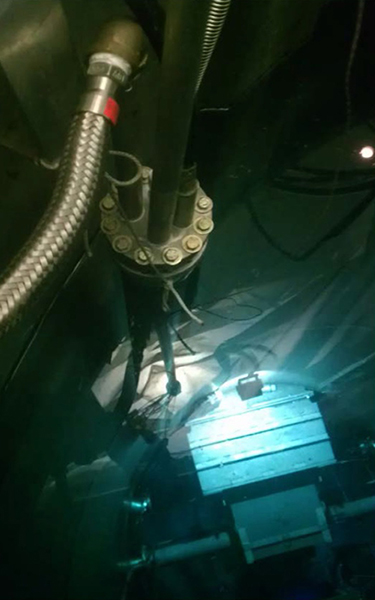
Dr. Pavel Tsvetkov, an associate professor in the Department of Nuclear Engineering at Texas A&M University, is exploring novel sensors for extreme environments by taking advantage of fiber optics-based detection approaches in mixed radiation/thermal fields. Fiber optics sensors offer a uniquely distributed option in situations where traditional sensors would fail or provide only limited information.
Tsvetkov’s team will develop an optical fiber-based gamma thermometer (OFGBT) with big data sensor capabilities in collaboration with Drs. Thomas Blue and Tunc Aldemir of The Ohio State University and Dr. Diego Mandelli of Idaho National Laboratory.
“The newly developed OFGBT will have the smallest possible sensor footprint in the core, ensuring there is no disruption of the reactor while an innovative big data sensor will transmit large amounts of data,” said Tsvetkov. “OFGBTs and their data analytics will provide a safe and improved solution to the monitoring of the spatial power distribution within the core, leading to an increase in plant safety and efficiency. In addition, use of fiber optics will minimize the instrumentation decommissioning footprint.”

The project is both an experimental and computational effort focused on the ability to measure power distributions in nuclear reactors. The research has two tracks. In track one, “Sensor Development and Testing,” the team will build and test an
The current sensor work resulted in several Master of Science and Ph.D. dissertations, most recently in Master of Science dissertations by Grace Marcantel and Charles Stratton, both students advised by Tsvetkov.
The project is one of 89 projects recently selected by the U.S. Department of Energy’s (DOE) Office of Nuclear Energy for funding for nuclear energy research, facility access, and crosscutting technology and infrastructure development.